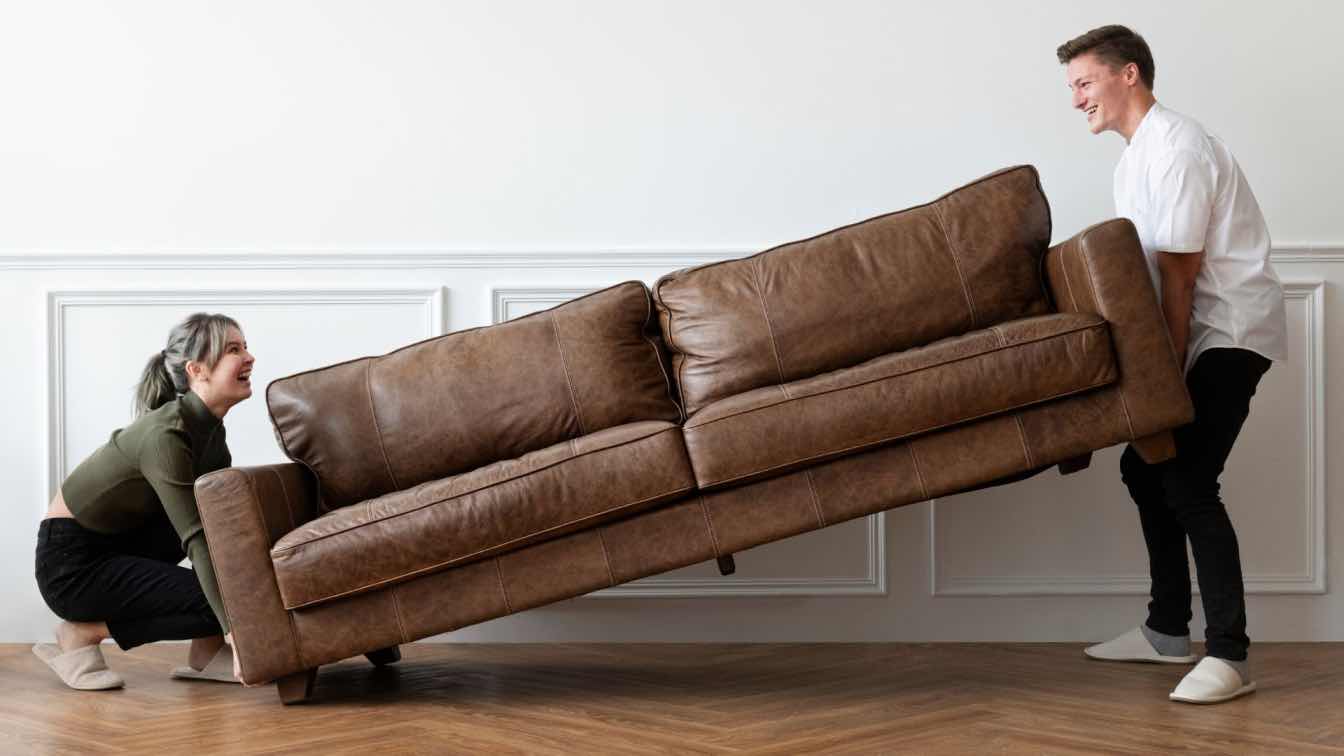Moving heavy furniture can be a daunting task, but with proper planning, the right tools, and safe techniques, you can accomplish it efficiently and safely. Whether you're relocating to a new home or rearranging your current space, this comprehensive guide will walk you through the essential steps to move heavy furniture without injury or damage.
Moving heavy furniture can be a daunting task, but with proper planning, the right tools, and safe techniques, you can accomplish it efficiently and safely.
Whether you're relocating to a new home or rearranging your current space, this comprehensive guide will walk you through the essential steps to move heavy furniture without injury or damage.
Step 1: Plan and Prepare
Before lifting a single item, take the time to plan your move. Measure your furniture and the pathways through which you'll be moving it.
This includes doorways, hallways, and staircases. Ensuring a clear path is crucial to prevent accidents and damage.
Additionally, clear any obstacles such as rugs, cords, or items that could cause tripping. Protect your home by using corner guards on walls and door frames, and lay down floor protectors or moving blankets to prevent scratches and dents.
Step 2: Gather Essential Moving Equipment
Having the right tools can make moving heavy furniture safer and more manageable. Furniture sliders allow you to slide heavy items across floors without damaging them.
Moving blankets and pads protect furniture surfaces and walls from scratches and dents during the move. Dollies and hand trucks can help transport heavy items with less effort.
Lifting straps, also known as shoulder dollies, help distribute weight evenly, reducing strain on your back.
Don't forget to wear heavy-duty gloves to protect your hands and closed-toe shoes to safeguard your feet. Keep basic tools like screwdrivers and wrenches handy for disassembling furniture if necessary. Most moving companies provide their employees with tool kits to make their job easier.
Step 3: Disassemble Furniture When Possible
Reducing the size and weight of furniture can make it easier to move. Remove detachable parts such as legs, cushions, and drawers.
Place screws, bolts, and other small items in labeled plastic bags to keep them organized. Wrap fragile elements like glass panels or decorative features with bubble wrap or moving blankets to protect them during the move.
Step 4: Use Proper Lifting Techniques
To prevent injuries, always lift correctly. Bend at your knees, not your waist, keeping your back straight. Use your leg muscles to lift, not your back.
Hold furniture close to your body to maintain balance and reduce strain. Avoid twisting your torso; instead, pivot with your feet to change direction. If moving with others, coordinate your movements and lift simultaneously to prevent accidents.
Step 5: Protect Your Floors and Load Safely
Prevent damage to your home during the move by using furniture sliders under heavy items to move them smoothly across floors. Lay down protective coverings like cardboard, plywood, or moving blankets to shield floors from scratches and dents. Apply corner protectors or padding to walls and door frames to prevent scuffs and chips.
When transporting furniture, load heavy items first, placing them at the bottom and towards the front of the moving truck to maintain balance.
Use ratchet straps or ropes to tie down furniture, preventing movement during transit. Fill gaps with smaller items or padding to reduce shifting.
Step 6: Consider Professional Help
If the task seems overwhelming or the furniture is exceptionally heavy or valuable, hiring professional movers might be the best option. They have the experience and equipment to handle complex moves safely.
Final Thoughts
Moving heavy furniture doesn't have to be a back-breaking endeavor. With careful planning, the right tools, and proper techniques, you can relocate your belongings safely and efficiently. Always prioritize safety, and don't hesitate to seek professional assistance when needed.
FAQs
1. How do I protect my floors and walls when moving heavy furniture?
To safeguard your floors and walls during a move, use furniture sliders under heavy items to prevent scratches and dents. For hardwood or tile floors, felt sliders are ideal, while plastic sliders work well on carpeted surfaces. Wrap furniture in moving blankets or bubble wrap to protect against bumps and scrapes. Additionally, use corner guards on walls and door frames to prevent damage as you maneuver large pieces through tight spaces.
2. What equipment do I need to move heavy furniture safely?
Essential equipment for moving heavy furniture includes:
Furniture sliders: Reduce friction and protect floors.
Moving blankets and pads: Prevent scratches and damage.
Dollies and hand trucks: Assist in transporting heavy items with less effort.
Lifting straps or shoulder dollies: Distribute weight evenly and reduce back strain.
Heavy-duty gloves: Protect your hands and improve grip.
Basic tools: Screwdrivers and wrenches for disassembling furniture.
3. How can I move heavy furniture up or down stairs safely?
Navigating stairs with heavy furniture is challenging and requires caution. Use a hand truck or appliance dolly with straps to secure the item. When moving upstairs, have one person at the lower end to push and another at the top to pull, ensuring the weight is balanced. For moving downstairs, reverse the positions. Always communicate clearly with your partner to coordinate movements. Take breaks as needed, and ensure the stairs are clear of obstacles.





